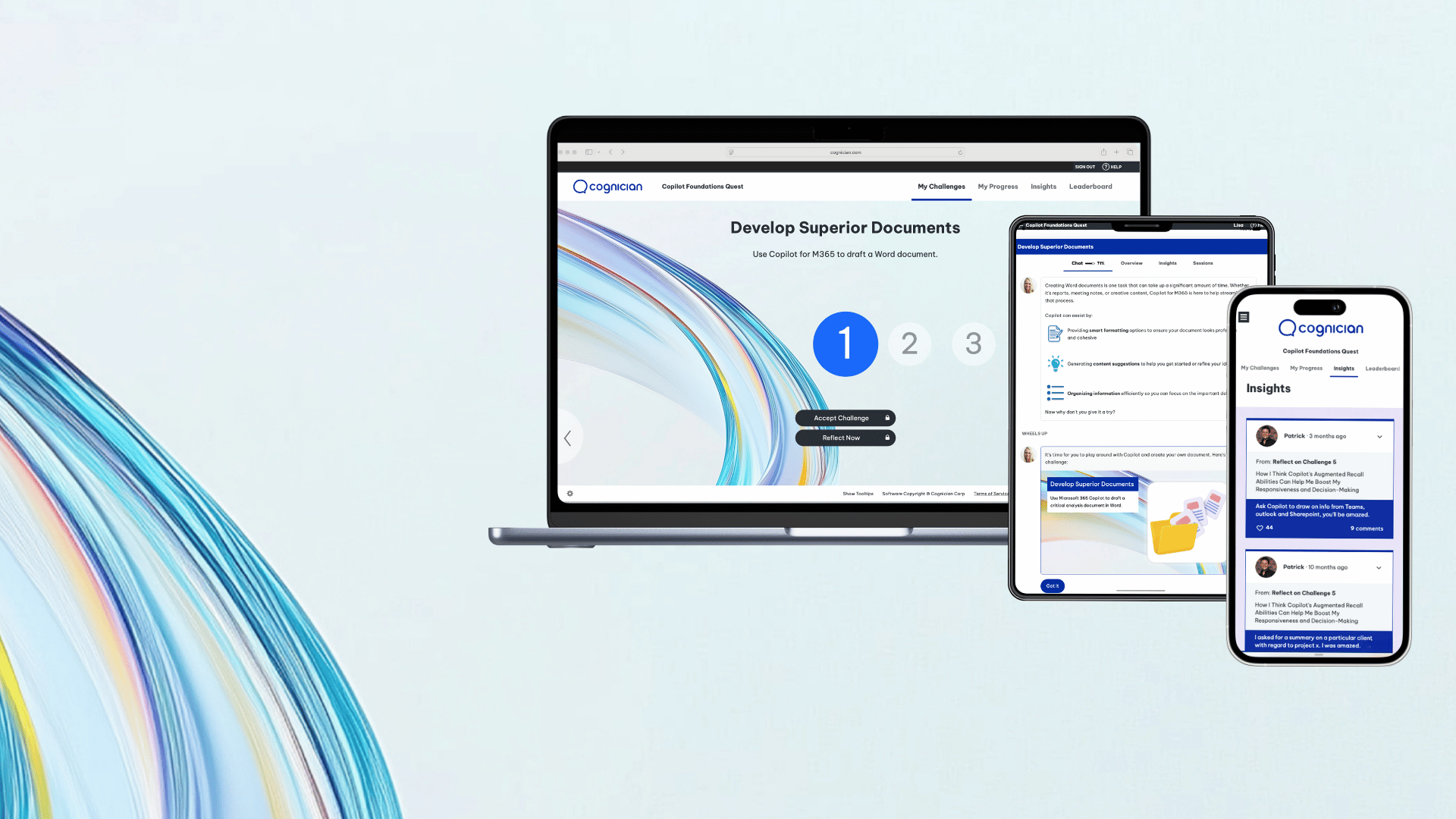How do we activate behavior change? This article discusses our discovery process for creating our custom programs.
Discovery is a collaborative process where we and our client align on the focus and goals of a change program by establishing a greater context. Typically, discovery covers a lot of ground. This article will only focus on the part of the discovery process where we determine what behaviors need to change and how we will approach activating that change.
Getting to Know You and the Issue You'd Like Us to Address
The first step in our discovery process is working with our client to establish the organizational problem(s) they would like to address during the program. Rather than simply accepting a static list of objectives, we use this time to get to know our clients and uncover the context needed to develop programs that are genuinely effective. We value this time because we can check assumptions from both sides so that everyone is on the same page.
We strive to define the issues clearly to make sure we focus on the right needs. If we focus on the wrong needs, it's not that we won't activate any behavior change; it's that we won't activate the desired behavior change.
To put the above into context, let us use an example of a recent project we worked on. A software company was modernizing its systems, and a part of this modernization effort was to transition IT service engineers to an agile/DevSecOps approach.
Our client, together with one of our expert learning designers, identified three key problems:
- A lack of self-sufficiency in carrying out DevSecOps practices
- Low motivation for continuous improvement
- Teams were not yet mature in automation practices
Causes
Once we have a clear view of the problems or untapped opportunities, we analyze the causes and identify which ones could be influenced through employee activation. During our collaboration with our client, the following issues were outlined:
- Teams were previously reliant on a centralized applications team that carried out DevOps
- A lack of maturity – teams were only at the early stages of operating as full-stack agile squads
- Significant culture change in ways of working
With relevant causes at hand, we are then in a position to identify the desired behaviors and how to activate them i.e., what would their teams have to do – see, feel, apply, challenge, or reevaluate – to overcome or remove obstacles to change. Behaviors are desirable if they address one or more causes of the problems that undermine the organization's needs.
The Focus of the Program
Once we understand the problems and their causes, we can then create the program's goals. In the case of our client, the program needed to empower users to change their ways of working, organize themselves differently, and experience how full-stack teams work together.
Define the Audience
While we're shaping the desired behaviors our client is looking for, we're also identifying our audience. The audience must be able to solve the problems identified earlier. A good intervention aimed at the wrong audience will fail. Therefore, we also assess where the audience is in terms of their skill levels so that the interventions are at the right level for each learner.
In the case of our client, it was decided that IT Service engineers, including RUN Service teams and Application teams, were going to do the program.
Desired Behaviors
Having identified the program focus and the relevant audience, we then summarize which behaviors would reduce the problem and/or contribute to the solution. We refer to these as "desired behaviors."
The desired behaviors for our client's software developers were as follows:
- End-to-end ownership of development
- Self-sufficiency – individuals needed to realize their part in mature full-stack teams
- Flexibility
- Collaboration
- Shift to automation
- Practice 'shift-left' principle (test early, test often, continuously test)
- Apply DevSecOps mindset/behaviors
- Risk tolerance (make code secure), continuous improvement, and customer-centricity
Understanding the Obstacles to Desired Behaviors
With the current and desired behaviors mapped out, we can diagnose which obstacles prevent a shift from the current to the desired behaviors. This is a rigorous process.
The obstacles to the desired behaviors above were due to the team being:
- Overwhelmed by the significant shift in the ways of work
- Uncomfortable with the pace of change
- Unfamiliar with the new technology
Techniques and Triggers to Overcome Obstacles
With the obstacles explicitly identified, we then select the techniques and triggers (based on science and logic) that will overcome the obstacles and activate the desired behaviors which will address the problems we've identified.
For our clients, behaviors that their employees need to adapt to overcome these specific obstacles would be in the areas of:
- Reimagining their roles and responsibilities
- Being flexible
- Adopting a continuous improvement approach where they are ready to learn new skills
Let's use the first example above (reimagining their roles and responsibilities) to illustrate how we would select a trigger to help the user overcome this obstacle. The challenge in a cog would prompt the user to think about their role differently. A particular trigger would lead to the user reimagining their role and letting go of an outdated, overly narrow view of their role. The result is the desired behavior of taking more ownership of their role development.
Designing for Evidence
At this point, we have enough information to select and design the right program for our client's needs. During the program, we will collect data from employees to see if the behavior change was successful and achieved the intended results.
For example, when designing this program we wanted to ensure that by the end of the program, users will:
- Indicate how their role will change throughout the transformation journey
- Identify the key DevSecOps behavior shifts needed to operate as a full-stack engineer
- Apply a DevSecOps practice (i.e. shift-left) to their daily work
Over the years we have developed a unique discovery process that results in highly focused and effective change programs. What problem would you like us to help you solve in your organization? Book a call or sign up for a free trial today to learn more.



.png)

